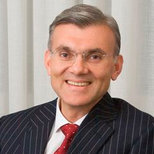Cities and the wealth of nations
SUGGESTED



The map of the global economy most of us have in mind is one of nation states connected to each other via flows of trade, capital, people and technology. That is still highly relevant. But throughout history the most intensive cross-border economic transactions have been between cities – mostly cities located on coastlines. So think of a different map of the global economy: one of cities connected across land borders, seas and oceans through the exchange of goods and services, foreign investment, migrants and short-term workers, and border-hopping technology.
Unprecedented levels of urbanisation make this city-based map especially relevant. Three years ago, for the first time in history, over half the world’s population lived in cities; they account for over 80 per cent of global GDP. According to McKinsey Global Institute, as of 2007, 1.5 billion people (22 per cent of the world’s population) lived in the world’s 600 most populous cities and accounted for a GDP of $30 trillion – well over half of global GDP. The top 100 cities, with a GDP of $21 trillion, accounted for 38 per cent of global GDP. In 2025, McKinsey reckons that the top 600 cities will have 25 per cent of the world’s population and nearly 60 per cent of global GDP.
Most productive policy innovation is happening in cities and sub-national regions, not at the level of national governments, let alone in international forums such as the UN, EU and G20. Policy-making is more flexible and practical the closer it is to the citizen. And this is more conducive to all-round learning and adaptation: cities emulate each other and adopt best international practice often better than nations do.
This is true of cities and state governments in the USA while Washington DC remains gridlocked. In the EU, national governments and the EU institutions are stuck in sclerotic political cartels with failed policies. Can Europe’s cities break out of this straightjacket and unleash long-delayed reforms?
However, this century’s story of cities and the wealth of nations will be scripted mainly in the emerging world – outside the West. Over the next two decades, about 170 million people will move to cities in developed countries – but 2.6 billion people will do so in developing countries. Asian cities, stretching from India to China and north-east Asia via south-east Asia, will be the main players. McKinsey Global Institute’s list of the top 600 cities contains 220 from developing countries. But it estimates that, by 2025, 136 new cities will join this list – all from developing countries. Of the new entrants, 100 will come from China alone.
What are the ingredients that make cities more productive? Some vital municipal policies are parochial: urban planning and zoning, housing, water, sanitation, policing and so on. But the most successful cities, like the most successful nations, also have the following: stable and solid public finances; low, simple and competitive taxation; simple and transparent business regulation; strong and impartial rule of law; openness to international trade and foreign investment; a welcoming environment for ‘foreign talent’; good ‘hard connectivity’ – roads, transit systems, ports, airports; and good ‘soft connectivity’ – education, skills and technology diffusion. Like nations, cities with limited – but effective – government and competitive markets do better than cities with big, inefficient government and distorted markets. The city-states of Hong Kong and Singapore are the role models. They are the benchmarks for others to emulate.
Cities were at the heart of the medieval and early modern European Miracle. Stadtluft macht frei – city air makes you free – was the refrain of the day. Cities are now at the heart of the Asian Miracle. Richard Cobden and Jane Jacobs had a vision of cities as the best available political-economic units to promote prosperity, freedom and peace. Will this vision come closer to realisation in the twenty-first century?
This article originally appeared in the Spring 2014 issue of EA Magazine.




